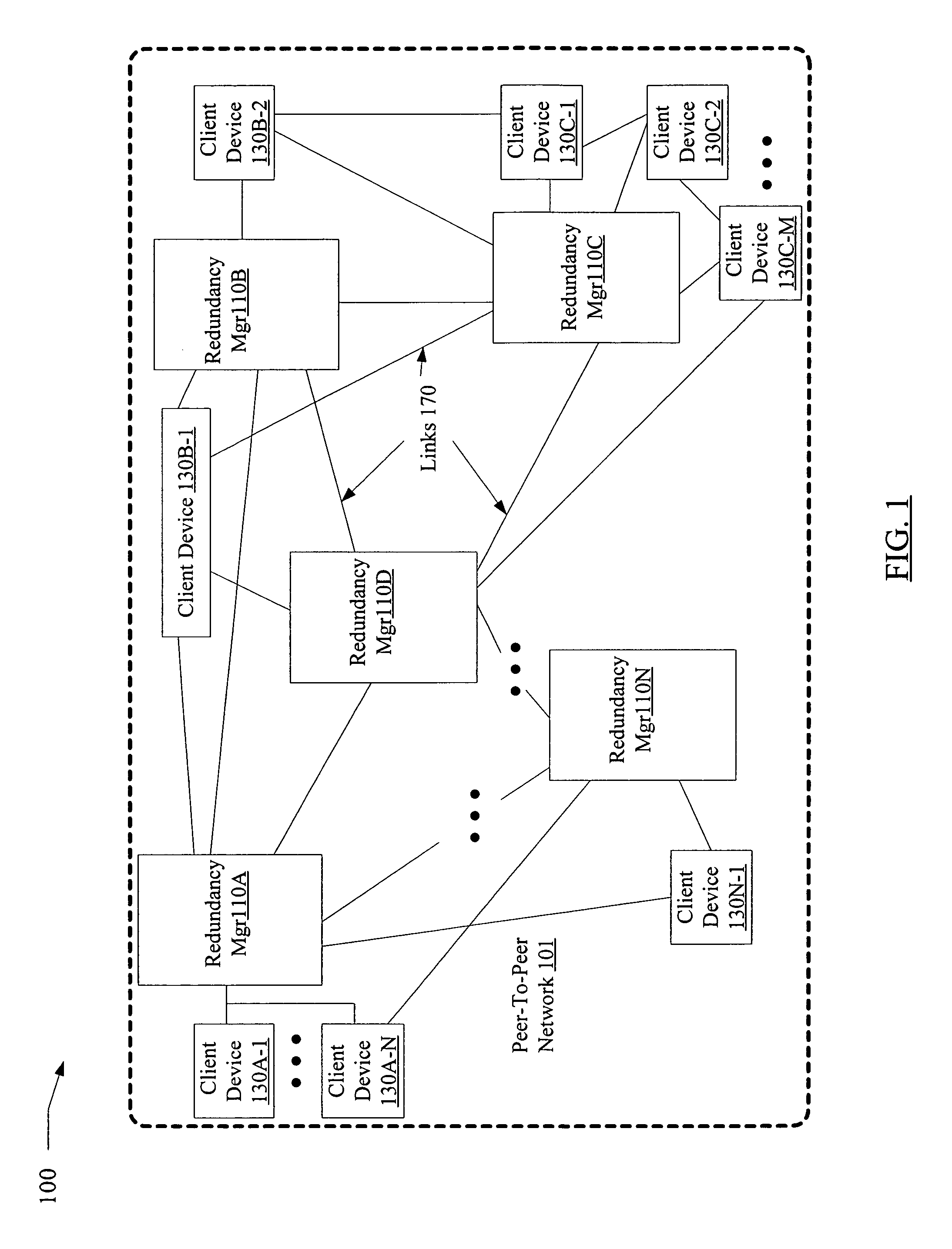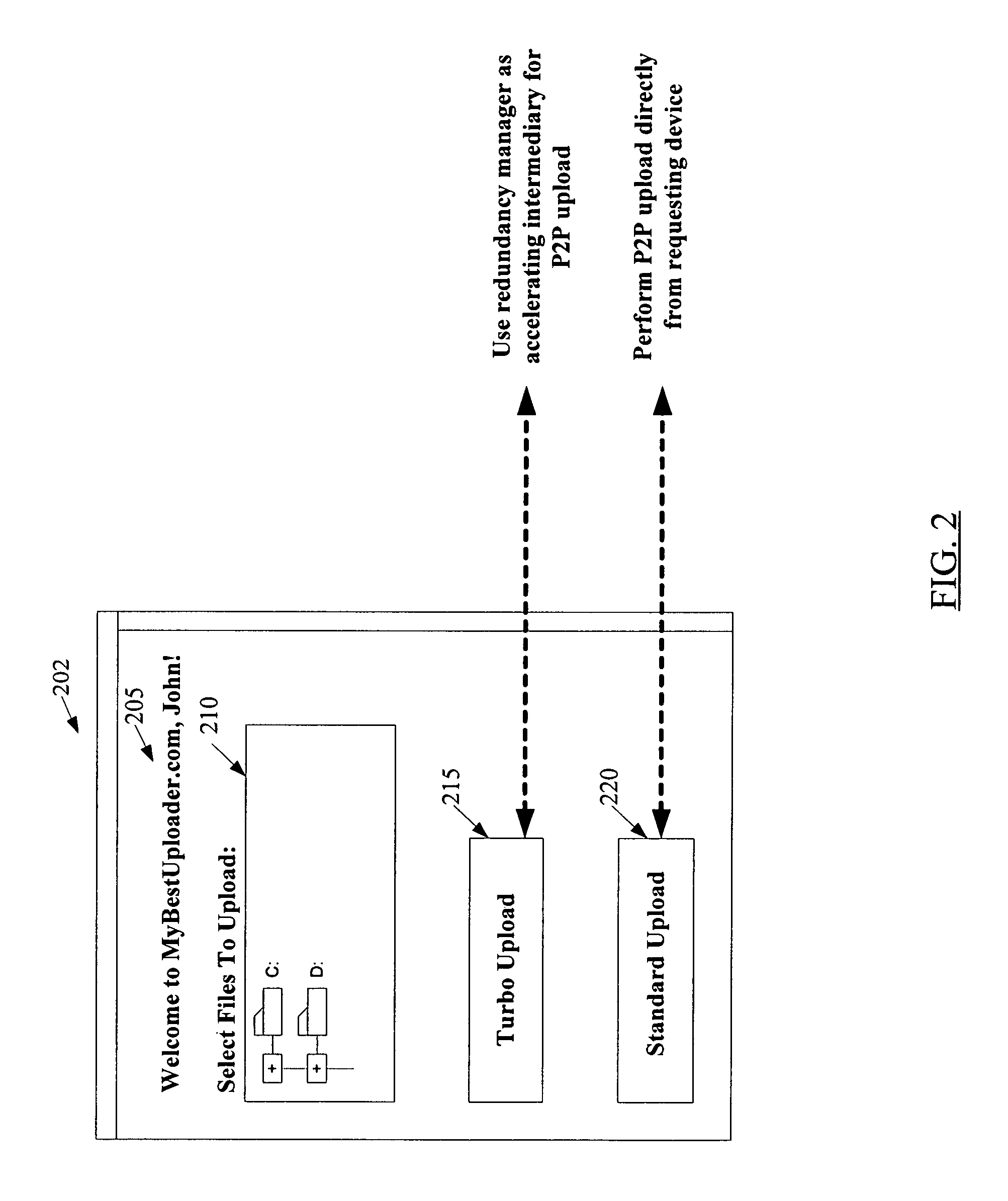Redundancy management service for peer-to-peer networks
a peer-to-peer network and storage management technology, applied in the field of computer systems, can solve the problems of insufficient local backup of data, unsatisfactory client-side overhead of p2p storage, and the loss of personal data such as photographs, financial documents, etc., and achieve the effect of reducing the overhead of client-side p2p storag
- Summary
- Abstract
- Description
- Claims
- Application Information
AI Technical Summary
Benefits of technology
Problems solved by technology
Method used
Image
Examples
Embodiment Construction
[0017]FIG. 1 is a block diagram illustrating a system 100 according to one embodiment. As shown, system 100 includes a plurality of client devices 130 (e.g., devices 130A-1-130A-N, 130B-1, 130C-1-130C-M, 130N-1) and a plurality of redundancy managers 110 (e.g., redundancy managers 110A-110N). At any given point of time, at least some of the redundancy managers 110 and at least some of the client devices 130 may be linked to one another via links such as links 170 of network 101 in a peer-to-peer (P2P) configuration to implement a distributed storage management technique in which the redundancy managers are configured to offload some of the processing typically required to be performed by clients 130 when data objects are uploaded into the P2P network 101, as described below in further detail. For example, in one embodiment, in response to a request at a client device 130 to upload a specified data object into the P2P cloud, a particular redundancy manager 110 associated with the cli...
PUM
 Login to View More
Login to View More Abstract
Description
Claims
Application Information
 Login to View More
Login to View More - R&D
- Intellectual Property
- Life Sciences
- Materials
- Tech Scout
- Unparalleled Data Quality
- Higher Quality Content
- 60% Fewer Hallucinations
Browse by: Latest US Patents, China's latest patents, Technical Efficacy Thesaurus, Application Domain, Technology Topic, Popular Technical Reports.
© 2025 PatSnap. All rights reserved.Legal|Privacy policy|Modern Slavery Act Transparency Statement|Sitemap|About US| Contact US: help@patsnap.com



